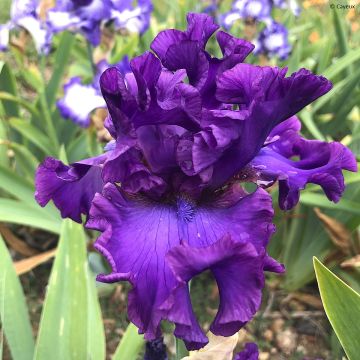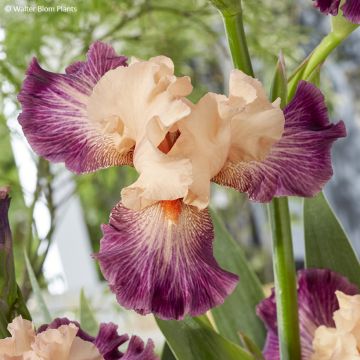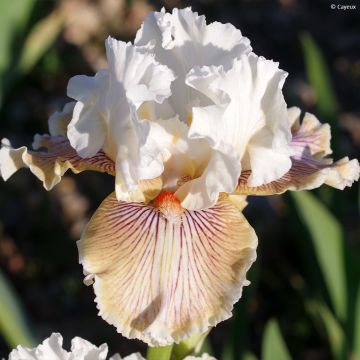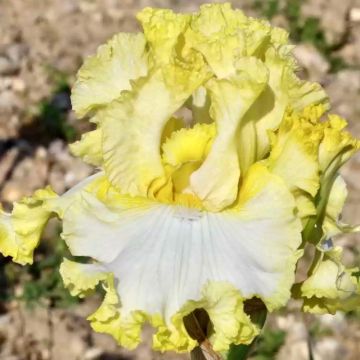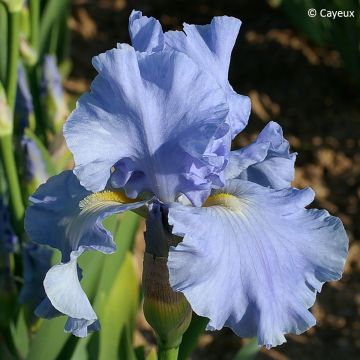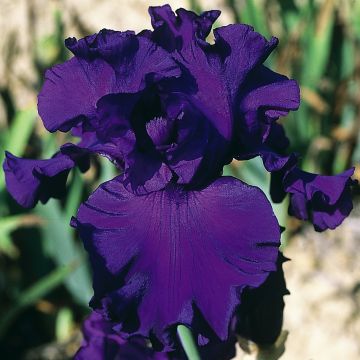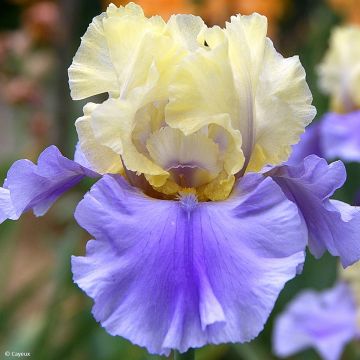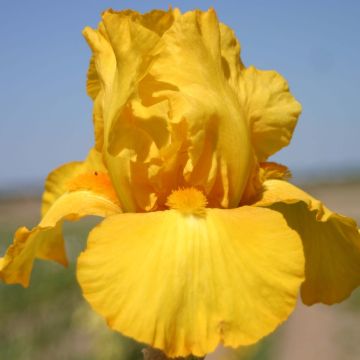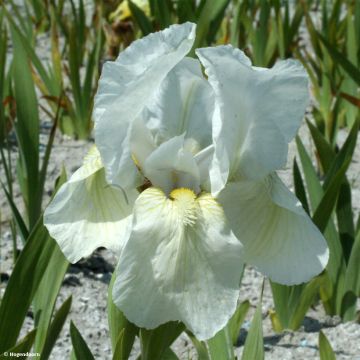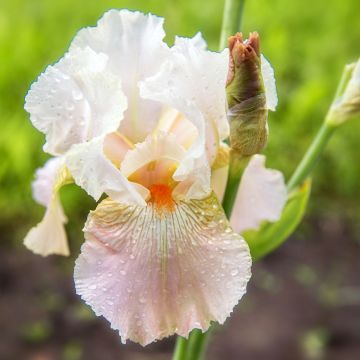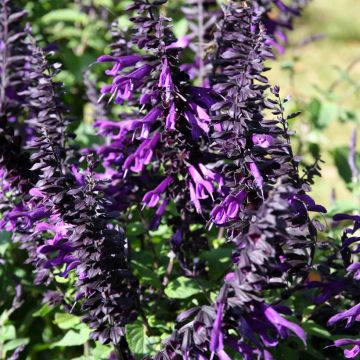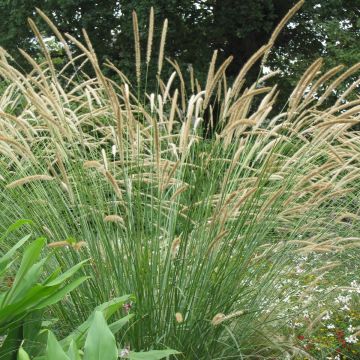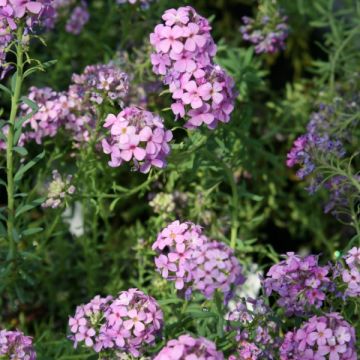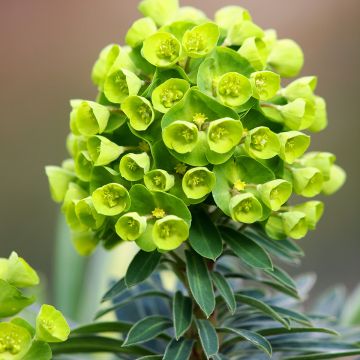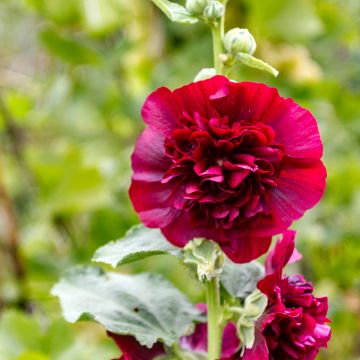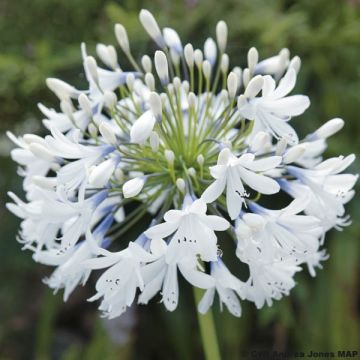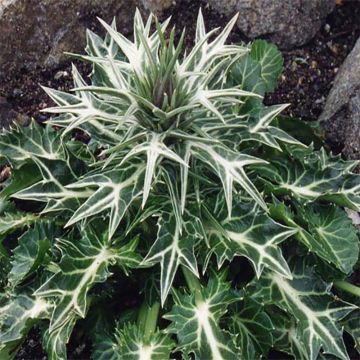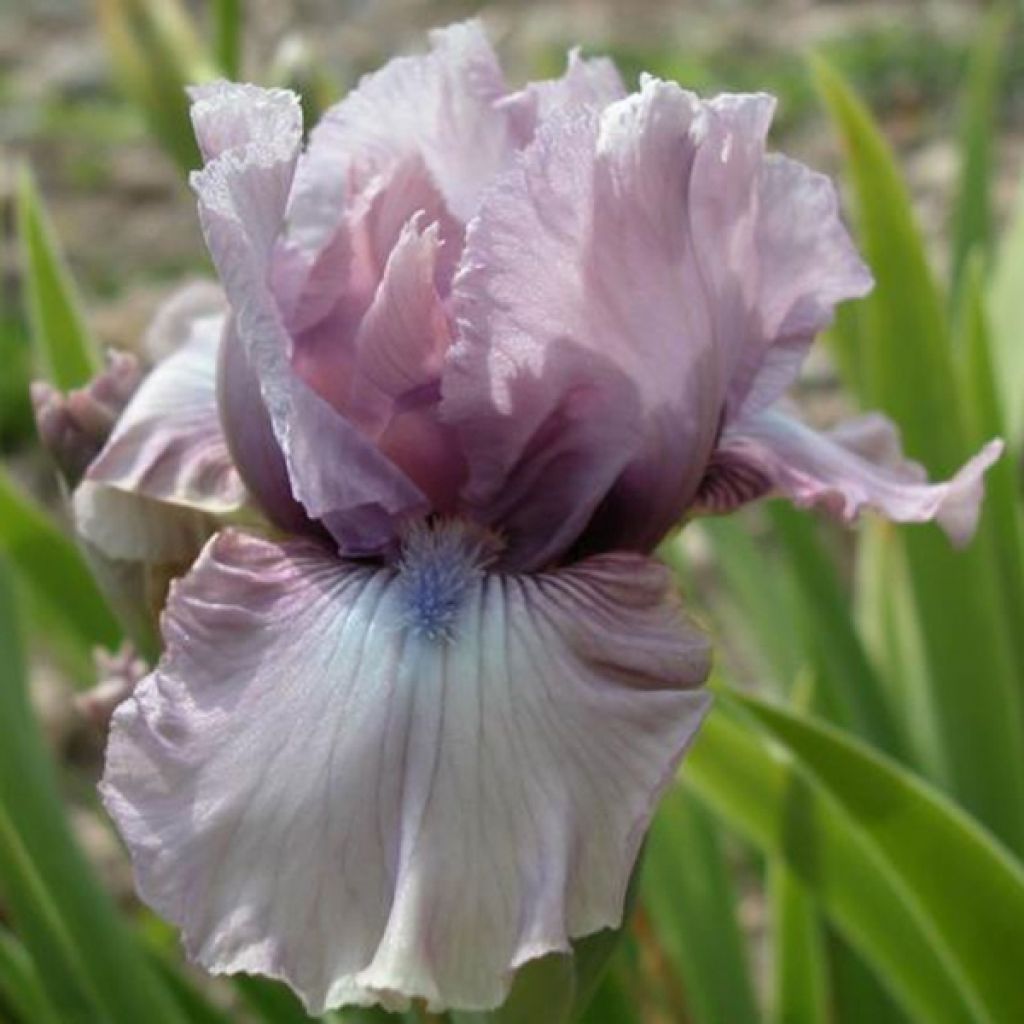

Iris germanica Donegal
Iris Donegal
Iris germanica Donegal
German Iris, Bearded Iris
Still no flowers, what should I do?
Josseline, 12/08/2021
Special offer!
Receive a €20 voucher for any order over €90 (excluding delivery costs, credit notes, and plastic-free options)!
1- Add your favorite plants to your cart.
2- Once you have reached €90, confirm your order (you can even choose the delivery date!).
3- As soon as your order is shipped, you will receive an email containing your voucher code, valid for 3 months (90 days).
Your voucher is unique and can only be used once, for any order with a minimum value of €20, excluding delivery costs.
Can be combined with other current offers, non-divisible and non-refundable.
Why not try an alternative variety in stock?
View all →This plant carries a 12 months recovery warranty
More information
We guarantee the quality of our plants for a full growing cycle, and will replace at our expense any plant that fails to recover under normal climatic and planting conditions.

Would this plant suit my garden?
Set up your Plantfit profile →
Description
Iris 'Donegal' is one of the intermediate irises, shorter than the Tall Bearded Iris and flowering earlier. While its flowers may be slightly smaller, they are just as numerous and equally charming. The corollas are beautifully wavy in a delicate pastel mauve-pink, accentuated by a deeper mauve at the heart of the flower where a lovely blue-lavender velvety beard is nestled. This variety is named after one of the wildest and most beautiful regions in Ireland and is a robust plant that can withstand bad weather, making it useful for windy gardens.
Iris 'Donegal' is a rhizomatous perennial plant with elegantly upright clumps from spring, with its foliage disappearing in winter. It belongs to the Iridaceae family. It is one of the many cultivars obtained over centuries, with a controversial origin debated around the number of chromosomes of potential ancestors. It is worth noting that Bearded Irises have European origins. They thrive in chalky soils and need ample sunlight for their rhizomes to "bake" in summer to bloom. A minimum of 6 hours of sunshine per day is generally required. Intermediate irises are the result of cross-breeding between dwarf irises and Tall Bearded irises. Unlike Border Irises, they flower just after the dwarfs, usually in April or early May.
'Donegal' will reach 50-53 cm (20-21in) high when in flower, with several buds per stem. The clump will spread indefinitely over time, with the central rhizomes losing foliage in favour of the outer ones. The foliage consists of long, wide, sword-shaped, slightly glaucous green leaves with parallel veins. In March-April, sturdy and thick flower stalks appear, which will produce 10 to 13 cm (4 to 5in) flowers in April-May, blooming from the top down. As is always the case with Garden Irises, the colour is enhanced by the iridescent texture of the upright petals and the trailing sepals. The flowers of 'Donegal' are slightly fragrant.
Bred by Keppel in 1997.
Awards: Honorable Mention in 2000.
To accompany irises, choose plants based on their needs (exposure, soil...) and vegetation (low-growing or light-foliaged plants), as well as their decorative appearance and flowering time. For example, Gauras will provide little shade to the irises and will keep the faded iris bed attractive throughout the summer. Eschscholzias, like irises, will thrive in dry soil in summer. Geraniums, salvias, and Libertias also complement irises very well. Slopes and terraced edges can be stabilised by dense plantings of robust and low-maintenance diploid old varieties. If the goal is more decorative and maintenance access is possible, one can choose more modern varieties, such as intermediate irises that are less likely than the Tall Bearded irises to be flattened by the wind and rain.
At the base of a wall, the relative shelter from the wind allows for the planting of Tall Bearded irises. Of course, shorter and earlier varieties can be planted in the foreground.
Border of a pathway: the realm of early dwarf irises less than 40 cm (16in) tall, along with intermediate irises (in terms of size and earliness) and border irises, which are of medium size but flower at the same time as the Tall Bearded irises.
Border of a flower bed: the domain of border irises, but also dwarfs, depending on the circumstances.
Mixed border: the entire range of sizes can be used, chosen according to their position (foreground, background) and the size of the surrounding plants.
Iris bed, iris garden: the paradise of the iris lover, where the choice of varieties (shape, colour, fragrance...) reflects each person's taste. The use of bearded irises of all sizes allows for two and a half months of flowering in spring. The choice of reblooming irises offers a few additional flowers in late summer or autumn, depending on the climate.
The vegetable garden can be planted with a few clumps or borders of irises for cut flowers.
Report an error about the product description
Iris Donegal in pictures




Flowering
Foliage
Plant habit
Botanical data
Iris
germanica
Donegal
Iridaceae
German Iris, Bearded Iris
Cultivar or hybrid
Other German Iris - Bearded Iris
View all →Planting and care
Iris should be planted in summer, in August-September, when the rhizomes are dormant. They need well-drained, limestone soil that does not retain too much water. Space appropriately based on the size and vigour of the variety: about 34-50 cm (13-20in) for large ones. Dig a hole that is wide and deep enough. Create a conical mound of soil, place the rhizome and spread out the roots on top of it. Cover the roots but leave the rhizome just above the surface of the soil. It should not be planted in a dip (risk of rot), so anticipate that the soil will settle and the iris will sink. In clayey or humid soil, the rhizome can even be raised on a slight mound. To make the soil cling to the roots, lightly firm the soil and water it abundantly after planting. Water 2-3 times if necessary until the plant starts growing. For a mix of colours, plant them in groups of several plants of the same variety. Always consider the direction of growth of the rhizomes by arranging them in a star shape, with buds and leaves facing outward, and leaving enough space between varieties for them to develop.
As soon as the flower stems appear, watch out for attacks by slugs and snails, which can destroy a flower stem overnight by cutting it off.
Planting period
Intended location
Care
-
, onOrder confirmed
Reply from on Promesse de fleurs
Similar products
Haven't found what you were looking for?
Hardiness is the lowest winter temperature a plant can endure without suffering serious damage or even dying. However, hardiness is affected by location (a sheltered area, such as a patio), protection (winter cover) and soil type (hardiness is improved by well-drained soil).

Photo Sharing Terms & Conditions
In order to encourage gardeners to interact and share their experiences, Promesse de fleurs offers various media enabling content to be uploaded onto its Site - in particular via the ‘Photo sharing’ module.
The User agrees to refrain from:
- Posting any content that is illegal, prejudicial, insulting, racist, inciteful to hatred, revisionist, contrary to public decency, that infringes on privacy or on the privacy rights of third parties, in particular the publicity rights of persons and goods, intellectual property rights, or the right to privacy.
- Submitting content on behalf of a third party;
- Impersonate the identity of a third party and/or publish any personal information about a third party;
In general, the User undertakes to refrain from any unethical behaviour.
All Content (in particular text, comments, files, images, photos, videos, creative works, etc.), which may be subject to property or intellectual property rights, image or other private rights, shall remain the property of the User, subject to the limited rights granted by the terms of the licence granted by Promesse de fleurs as stated below. Users are at liberty to publish or not to publish such Content on the Site, notably via the ‘Photo Sharing’ facility, and accept that this Content shall be made public and freely accessible, notably on the Internet.
Users further acknowledge, undertake to have ,and guarantee that they hold all necessary rights and permissions to publish such material on the Site, in particular with regard to the legislation in force pertaining to any privacy, property, intellectual property, image, or contractual rights, or rights of any other nature. By publishing such Content on the Site, Users acknowledge accepting full liability as publishers of the Content within the meaning of the law, and grant Promesse de fleurs, free of charge, an inclusive, worldwide licence for the said Content for the entire duration of its publication, including all reproduction, representation, up/downloading, displaying, performing, transmission, and storage rights.
Users also grant permission for their name to be linked to the Content and accept that this link may not always be made available.
By engaging in posting material, Users consent to their Content becoming automatically accessible on the Internet, in particular on other sites and/or blogs and/or web pages of the Promesse de fleurs site, including in particular social pages and the Promesse de fleurs catalogue.
Users may secure the removal of entrusted content free of charge by issuing a simple request via our contact form.
The flowering period indicated on our website applies to countries and regions located in USDA zone 8 (France, the United Kingdom, Ireland, the Netherlands, etc.)
It will vary according to where you live:
- In zones 9 to 10 (Italy, Spain, Greece, etc.), flowering will occur about 2 to 4 weeks earlier.
- In zones 6 to 7 (Germany, Poland, Slovenia, and lower mountainous regions), flowering will be delayed by 2 to 3 weeks.
- In zone 5 (Central Europe, Scandinavia), blooming will be delayed by 3 to 5 weeks.
In temperate climates, pruning of spring-flowering shrubs (forsythia, spireas, etc.) should be done just after flowering.
Pruning of summer-flowering shrubs (Indian Lilac, Perovskia, etc.) can be done in winter or spring.
In cold regions as well as with frost-sensitive plants, avoid pruning too early when severe frosts may still occur.
The planting period indicated on our website applies to countries and regions located in USDA zone 8 (France, United Kingdom, Ireland, Netherlands).
It will vary according to where you live:
- In Mediterranean zones (Marseille, Madrid, Milan, etc.), autumn and winter are the best planting periods.
- In continental zones (Strasbourg, Munich, Vienna, etc.), delay planting by 2 to 3 weeks in spring and bring it forward by 2 to 4 weeks in autumn.
- In mountainous regions (the Alps, Pyrenees, Carpathians, etc.), it is best to plant in late spring (May-June) or late summer (August-September).
The harvesting period indicated on our website applies to countries and regions in USDA zone 8 (France, England, Ireland, the Netherlands).
In colder areas (Scandinavia, Poland, Austria...) fruit and vegetable harvests are likely to be delayed by 3-4 weeks.
In warmer areas (Italy, Spain, Greece, etc.), harvesting will probably take place earlier, depending on weather conditions.
The sowing periods indicated on our website apply to countries and regions within USDA Zone 8 (France, UK, Ireland, Netherlands).
In colder areas (Scandinavia, Poland, Austria...), delay any outdoor sowing by 3-4 weeks, or sow under glass.
In warmer climes (Italy, Spain, Greece, etc.), bring outdoor sowing forward by a few weeks.






























